That was the 1960s when Lamborghini was born, that was the 1960s when a company institution was born to be part of the crème de la crème, master designs, and best performance. Ferrari would never touch, producing cars with shiny looks and technology at its best. Following is an article on the Top 5 Vintage Lamborghini Cars of the 60s, with awe at their timeless charm, innovative technology, and the legacy they created. They are not cars, they are works of art on wheels.
1. Lamborghini 350 GT (1964-1966)
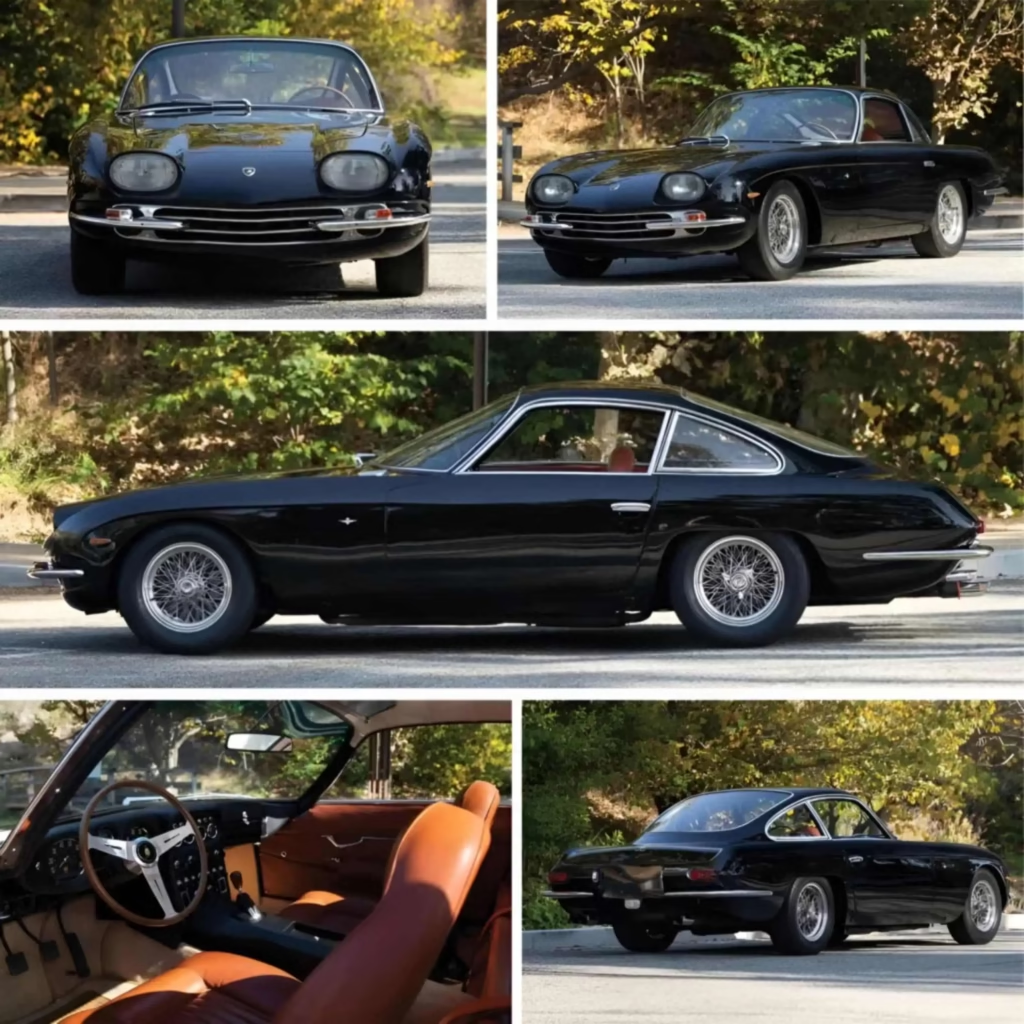
Overview
The Lamborghini 350 GT was the production vehicle of the new company’s initial product, and it was the foundation of the company’s ultimate success. The 350 GT was the beginning of supplanting Ferrari, and Lamborghini made a mark in the areas of performance, luxury, and technology. The 350 GT was a prototype vehicle that initiated the beginning of a new generation of engineering perfection and refinement.
Engine
The book is a recapitulation of the 350 GT, the car which once had a 3.5-liter V12 engine of 280 horses. The engine, so named because it took its name from the house of the book’s legendary engineer Giotto Bizzarrini, was itself a supercar, a DOHC gem that wrapped its silk horses around the car, draping majesty around the car. The motorcar’s top speed was 155 mph, and Motorcar was one of the quickest motorcars to travel on the highway. Engine position made the motorcar solid and hard, and the 350 GT was a weekend motorcar as well as a weekday motorcar.
Exterior
Carrozzeria Touring built the body of the 350 GT, and the body was low and gorgeous with wild-cut lines and an old-generation GT appearance. It was an old generation new body but was very good in aerodynamics and looks. Its rear short deck and large engine compartment gave it good proportion, and its smooth headlamps, aerodynamic, and old Lamborghini grille gave it a mysterious look. Its low, long aluminum body and long chassis made it low and lean and converted it into a superb driver’s car.
Interior
350 GT provided large and luxurious comfort. Here Lamborghini didn’t spend a cent, there with top gear like leather trim and polishing shiny wood dashboard only years and years later on Lamborghini production for which it would become renowned in glory. The driver’s s-eye-view construction kept everything neat and within reach of touch, and the top-of-class interior offered way-out comfort for motorway hot-cruising. Construction and quality on the 350 GT created an honest-to-goodness genuine grand tourer that cruised silky and cruised fast.
Key Features
350 GT was the first Lamborghini production car marketed as a Lamborghini sports luxury car. With its 3.5-liter V12 280 horsepower engine and its breathtaking Touring Carrozzeria body, it established the lofty benchmark by which all others would be held. And with its opulent top-of-the-line interior features as well, it was supreme, and elevated motor living to new levels.
Legacy
350 GT turned Lamborghini into a high-end sports car racing company. Appearance, performance, and hand craftsmanship were the yardstick of quality by which any Lamborghini automobile to be manufactured in the years ahead would be measured. Company tradition at Lamborghini continues to exist today in the form of a Collector’s Holy Grail car of the 350 GT. That’s why this vehicle count is under the section of Top 5 Vintage Lamborghini Cars of the 60s.
2. Lamborghini 400 GT (1966-1968)
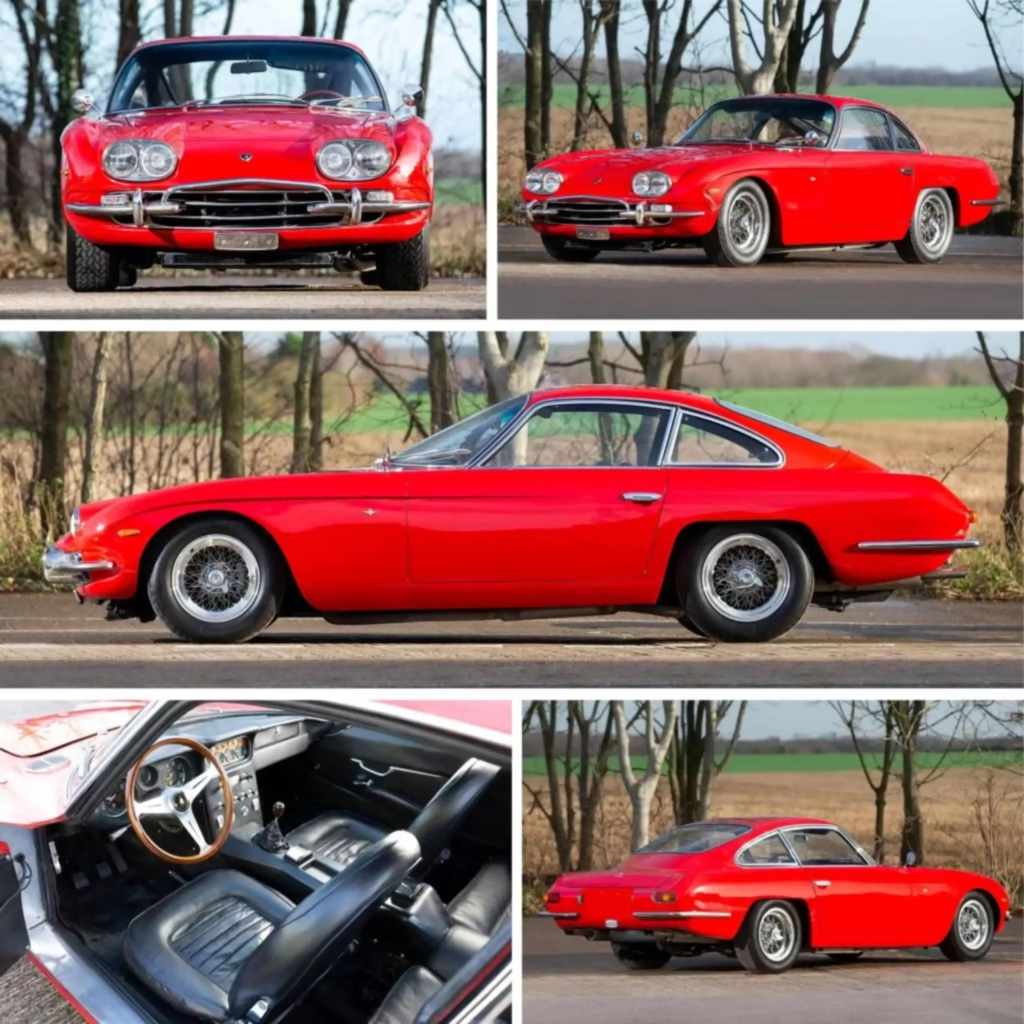
Overview
It’s extremely powerful and versatile, the 350 GT car was the Lamborghini 400 GT. Its first model was a Lamborghini 2+2 seater and consequently more practical looking for daily driving. It had been conceived based on the premise of combining driving passion and high performance with everyday practicability and grand tourer luxury.
Engine
In the 400 GT powered V12 engine of 320 horsepower with a 4.0-liter capacity. The engine imparted instant and silky power to the car and provided a top speed of 160 mph. Transmission of power support and displacement provided a smooth ride and connoisseur-quality ride to the 400 GT. Engine design gave Lamborghini ease with the performance and dependability that it had ever conceived.
Exterior
Aerodynamics also provided the 400 GT body exterior and the traditional GT appearance and ruggedness of Carrozzeria Touring. Its stunning and reflective body and traditional GT appearance and aerodynamics never lost their appearance like 350 GT but only became possible by making some infinitesimal changes to make it even more outstanding to make it beautiful and aerodynamic. Its larger wheelbase made it even more stable whenever it was driven on long motorways.
Carrying on and going on an even more stunning grand tour.
Interior
The 400 GT just went on and kept doing the very same thing, which its last generation had already been doing in such exquisite manners; still, there was beauty and comfort. The comfort was achieved through the application of soft materials such as leather and metallic wood dashboards that emanated and offered a home-like warmth-like ambiance to the driver and passenger as well. The rear seat of the vehicle also made each day’s driving simple through the environment that it could offer to transport more individuals without losing any instant of taste and comfort.
Key Features
The 400 GT came with the renowned new 4.0-liter V12 320-horsepower engine and was the chauffeur’s everyman dream car. Its pioneering 2+2 interior configuration placed it in a heavenly road tourer league. Carrozzeria Touring’s authoritative classic body styling placed the 400 GT on a prestige showcase, and luxuriously appointed interiors in upscale high-grade material placed it on a prestige plane of grand tourer refinement.
Legacy
The 400 GT also established Lamborghini as a builder of high-performance grand tourers. Its driveability, charm, and usability made it a destination stop. The 400 GT in its revised incarnation is a retro anachronism, raw brilliance reducing it to motor antiquities of the past. That’s why this vehicle count is under the section of Top 5 Vintage Lamborghini Cars of the 60s.
3. Lamborghini Miura (1966-1973)
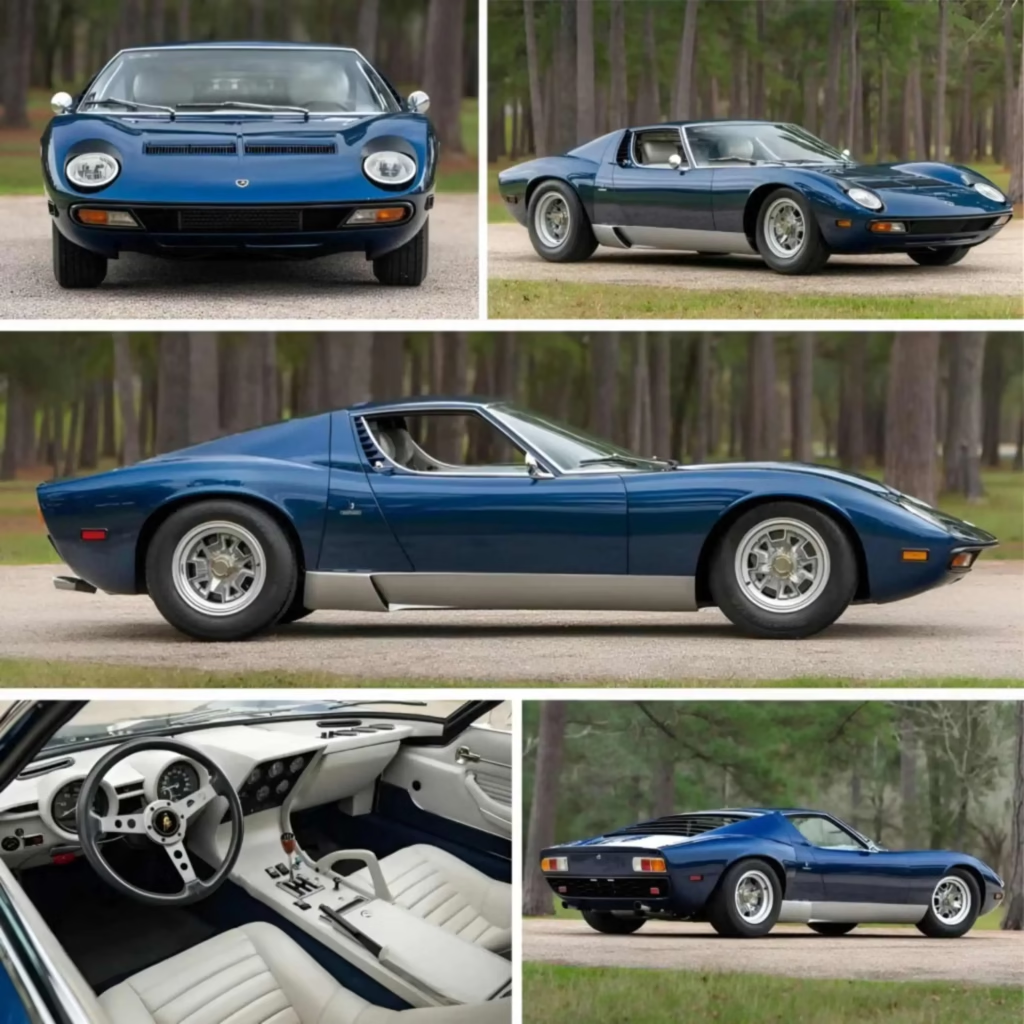
Overview
The Lamborghini Miura is the best car ever made. Lamborghini Miura initially rolled onto the roads in 1966 and Miura was the first supercar in the world, a vehicle that was the benchmark of performance as well as beauty. Its revolutionary mid-engine design, as well as configuration, were the benchmark of what was to dominate the sporting cars and hence the cars’ perfection.
Engine
The Miura boasted a 4.0-liter V12 of 350 horses for power. It was transversely mounted at the rear above the driver, a mounting which provided, in being whipped around and anchor-like, the same mounting weight feeling of road sensitivity and handling, and steering sensitivity. With all these attributes combined in one motorcar, it was a thudding circuit or motorway car to drive.
Exterior
Nicely proportioned by Marcello Gandini of Bertone, wedge-shaped and streamlined to the eye with swooshed lines and angularity. Ahead of its time, yet rational in that shape was being sacrificed for shape. With a swooshed bonnet to accommodate space for the motors and pop-up scissor doors at the rear, nothing was being sacrificed. But within its very futuristic appearance lay a timelessness which is now à la mode.
Interior
Miura was hot and cold. The interior brought depth to the interior level such as a leather-covered seat cover and wood insert dashboard, whose construction is so excellent that can be quoted along with Lamborghini’s construction excellence. The Interior was dominated by a highly tuned heavy performance where controls were well fitted ergonomically within the driver’s reach to deliver a highly participative and dynamic car driving experience.
Key Features
Miura was the origin of the supercars of the world because it was driven by its astonishingly superior 4.0-liter V12 motor that made 350 horses. The mid-chassis mounting of its motor transversely, which it did when it was first made, made it an even leaner, more boosting package. It’s Marcello Gandini’s body handworked at Berton, made it beautiful to automobile history and sculpture.
Legacy
Miura is a testament to the forward-thinking and radical thinking of Lamborghini. Its performance and pioneering design standards were unparalleled during that time, setting new benchmarks for supercars. Miura is the world’s most desirable car, and to date, it serves as a supercar inspiration. Miura is a testament to its mythological car. That’s why this vehicle count is under the section of Top 5 Vintage Lamborghini Cars of the 60s.
4. Lamborghini Islero (1968-1969)
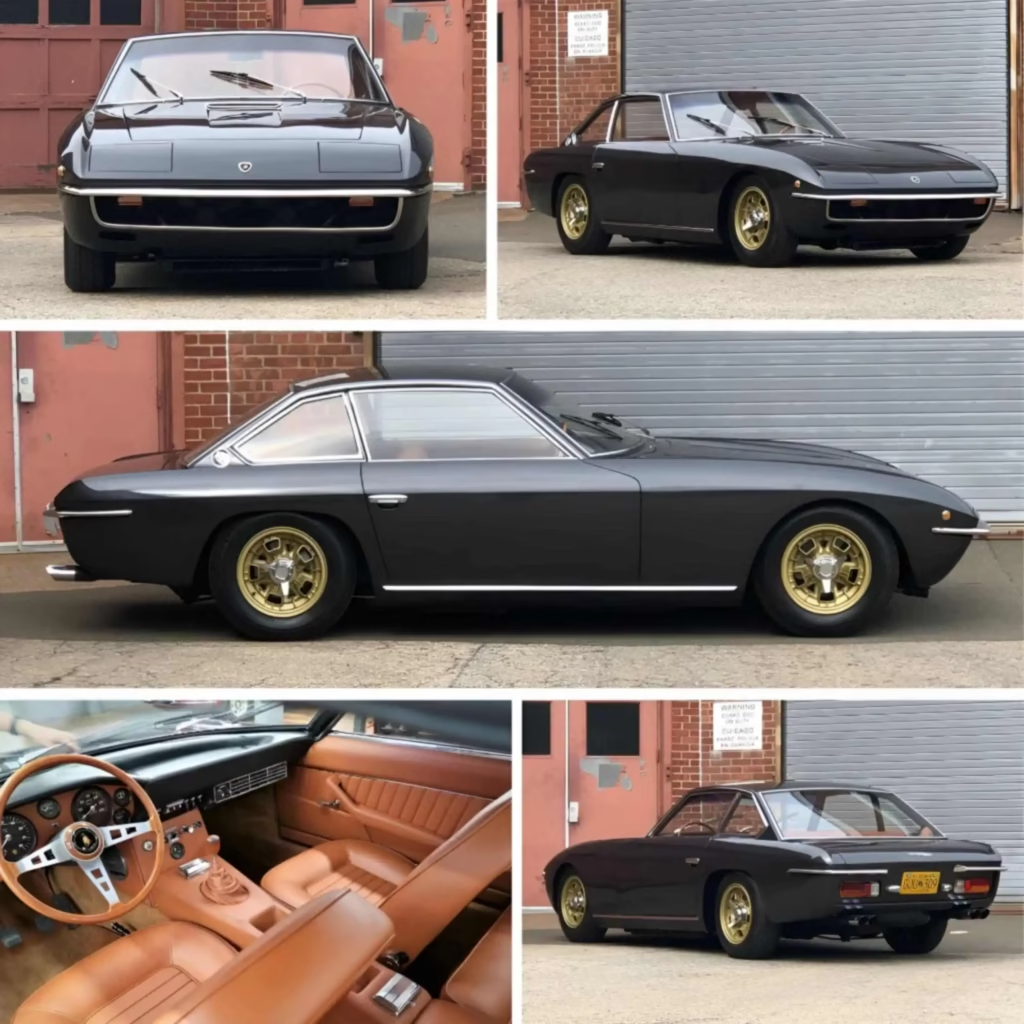
Overview
Lamborghini Islero was a tourer, a functional over-performance car. It had been developed as a more representative Miura for GT driving use. Islero would be a mass-market car bought by, and it’s where it’s an innovative car in Lamborghini’s history.
Engine
Islero had a 4.0-liter V12 developing 325 horsepower. It was an extremely smooth, refined engine, and it revved above the limit with an over-the-limit top speed of 155 mph. Islero was so fast as a grand tourer and had such a better speed and comfort ratio that one would ride it bughouse and cruise hundreds and hundreds of miles.
Exterior
Its interior was written by Mario Marazzi, and its interior was sinuous and streamlined with curved lines and classic GT lines. Its look was classic-style but designed to make it aerodynamics-bred. Islero’s simplicity of plain style also made it a style car among top drivers.
Interior
Islero interior trim capped the entire cabin atmosphere so rich and luxurious. Walnut dash and leather upholstering rich and luxurious furnishings completely ornamented the cabin interior space for the driver and passenger with rich indoor cabin color tone shades. spacious cabin was so cozy to step into after driving long car holiday miles for hours, and so precious to have as a great useful standby too.
Key Features
Islero also possessed a 4.0-liter V12 engine whose responsibility was to carry the load of 325 horses and therefore a sports car. Its sports gear look Mario Marazzi designed made it a monster-sized and chivalrous car in looks for car lovers as well. Its luxurious and plush interior, elegantly upholstered in the best material that existed at the time, made it a class-of-its-kind luxury tourer, and never short in where it was most needed both for performance as well as luxury.
Legacy
Islero is one of Lamborghini’s capabilities to develop wonderful grand tourers. Convenience, beauty, and power united in one, making Islero a legend among its users. Islero, as it stands, is the desired automobile because it is rare and costly, as any Lamborghini on record. That’s why this vehicle count is under the section of Top 5 Vintage Lamborghini Cars of the 60s.
5. Lamborghini Espada (1968-1978)
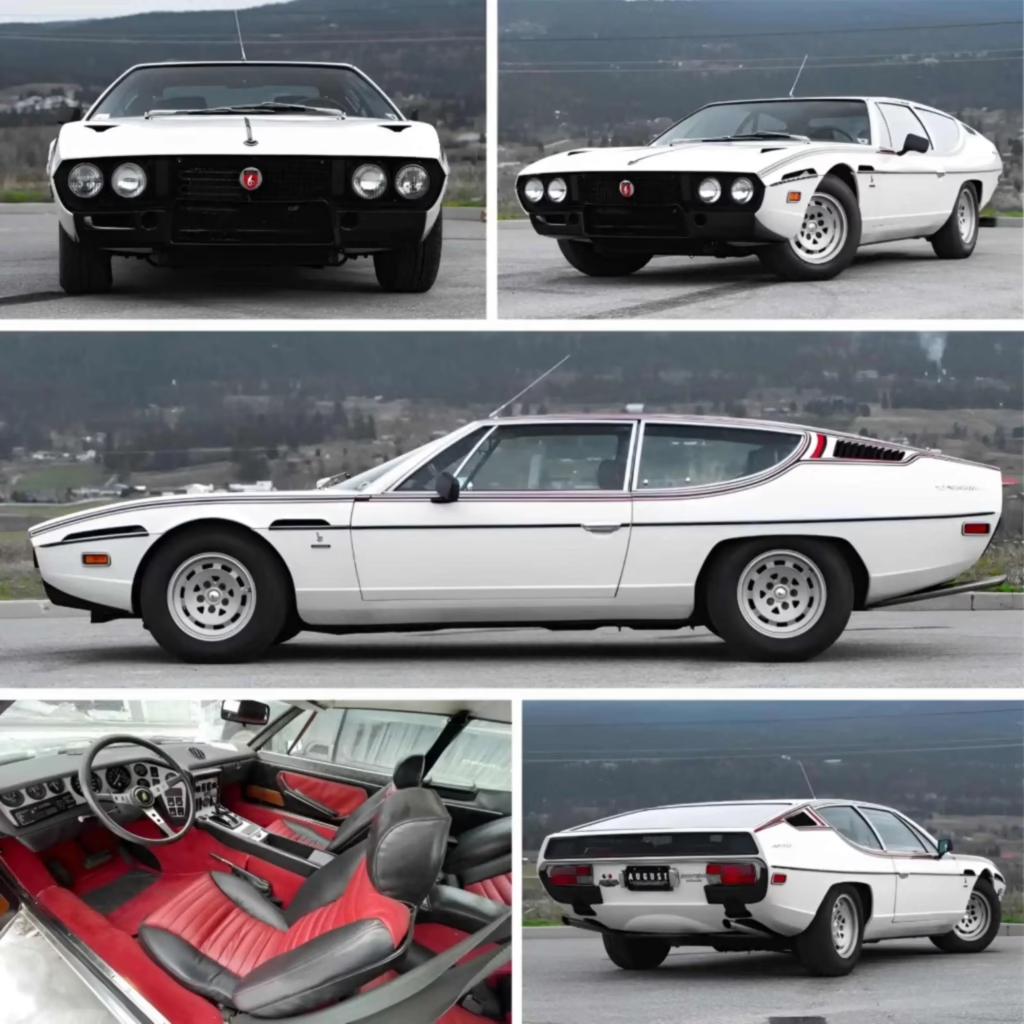
Overview
Lamborghini Espada was a tourer to offer that luxury-performance-usability compromise. It was constructed as Miura’s elder, mature brother, and the Espada possessed an incongruous mixture of purpose and looks. It was infamous as a four-seater, one of Lamborghinis that had more than two souls in it.
Engine
The Espada had a 4.0-liter V12 engine that made 325 horsepower. Smooth, instant torque, it could cruise the highways at around 155. Driveability and a roomy interior were the things for which the Espada was so much joy to drive under regular conditions as well as long trips.
Exterior
Espada’s body was penned by Bertone’s Marcello Gandini on wedge lines of wedge-shaped, space-age looks over traditional GT. The car was old-fashioned to behold but new to behold and to drive with ridiculous attention to appearance as well as to aerodynamics. Espada was light-years ahead in appearance than the ghoulish looks of the Lamborghini family’s monstrous bulk.
Interior
Internally, the Espada was extremely spacious and luxurious from the inside. The interior was lavishly upholstered with marvelous touches such as leather and a ginormous wood dashboard that were mostly classy in trying to relax the driver and passengers in a serene atmosphere. The extremely spacious interior offered added legroom and comfort and suited long distances very well.
Key Features
The Espada featured a 4.0-liter V12 325-horsepower engine and was therefore sufficiently powerful to be considered a grand tourer. Its hip Marcello Gandini technology-savvy look made it a cognoscenti fashion victim. Its rich-textured material interior decor and high-trim finish did, however, make it an upscale, high-tech choice for the owner who would appreciate the advantage of the grand tourer.
Legacy
The Espada bears witness to the capability of Lamborghini in manufacturing and creating grand tourers that can drive very well. The fusion of performance, usability, and appearance of the Espada was its appeal to motorists in the past years. The Espada is an old car nowadays since it possesses a special combination of luxury and performance and must be placed in history books. That’s why this vehicle count is under the section of Top 5 Vintage Lamborghini Cars of the 60s.
Conclusion Top 5 Vintage Lamborghini Cars of the 60s
The Top 5 Vintage Lamborghini Cars of the 60s were Lamborghini’s heyday, the decade that spawned some of the greatest legends and awe-inspiring motors to ever putter down the highway. They are Lamborghini styling masterpieces and engineering masterpieces, a gasp-inspiring sight and delight to personality.
That’s why these vehicles count under the section of Classic Cars. Connoisseurs and connoisseurs, and drivers who would never grow tired of soaring good-looking cars, would be irretrievably drawn to such legendary Lamborghinis. Even now, they continue to have the power to command attention among the brotherhood of drivers, if man-hours and hours spent building masterpieces that they are anything short of. So, does one have the luxury of a ride over the back of whomever one such hero happens to be? Let us hear your voice!


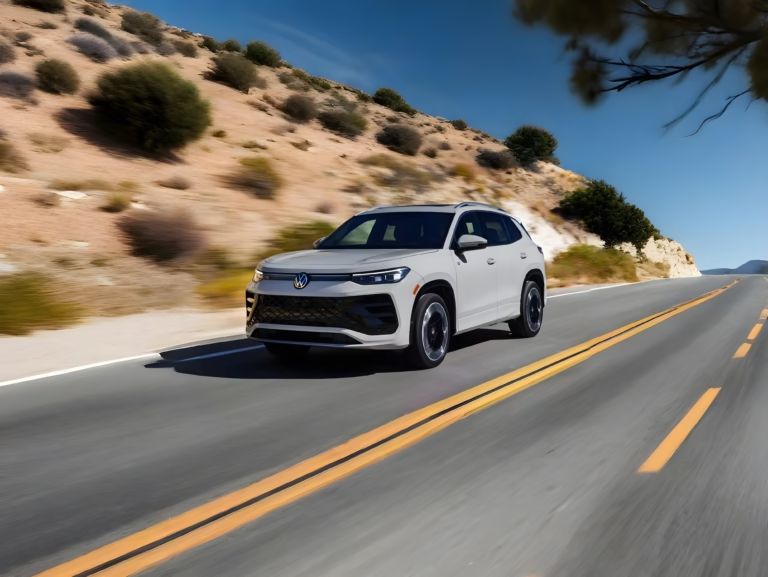

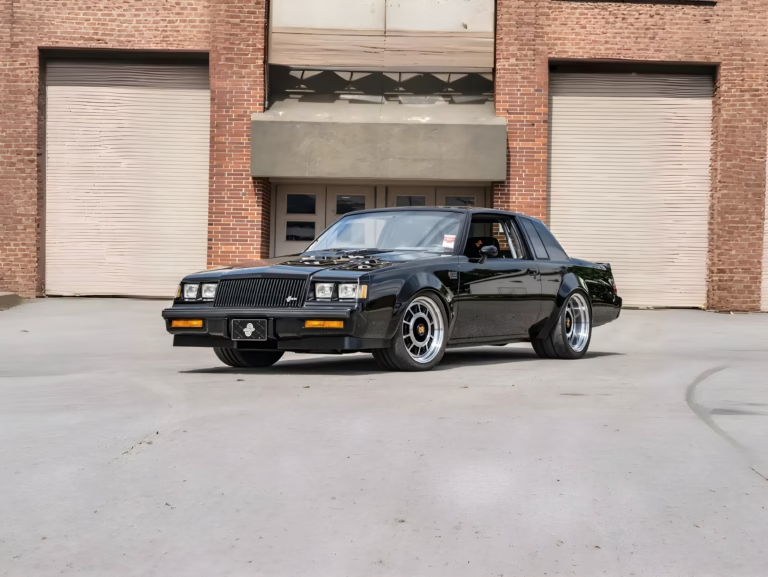
A buddy of mine recommended your blog on Facebook. I can see why.
Great post here.
Thanks
Hello there, I?ve read a few just right stuff here.
Certainly worth bookmarking for revisiting :-). I surprise how much attempt you place
to create any such magnificent informative web site,
Nice JOB!.
Thanks for the appreciation. We are thrilled you liked it. Bookmarking is always welcome and we will continue to work on making the site even better.
I gotta favorite this web site it seems invaluable handy
We are delighted that the website has been helpful. Your feedback motivates us to continue delivering high quality, accessible content.